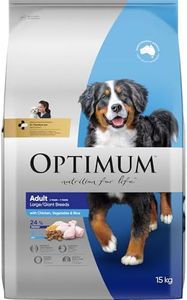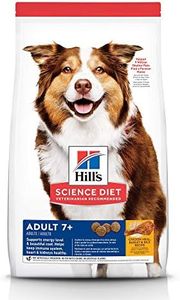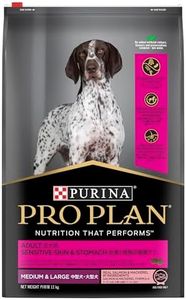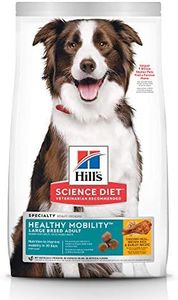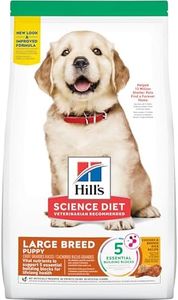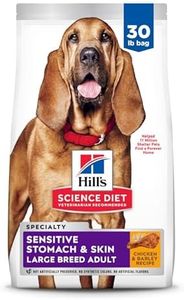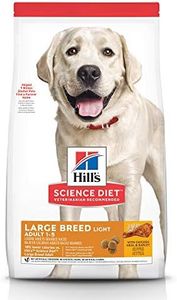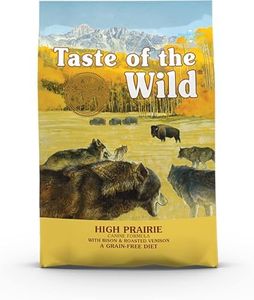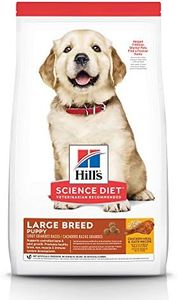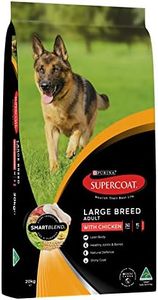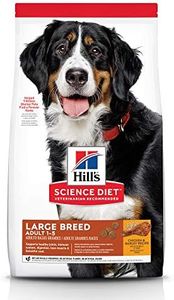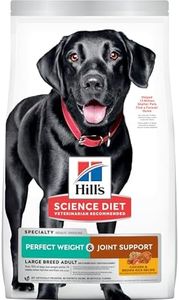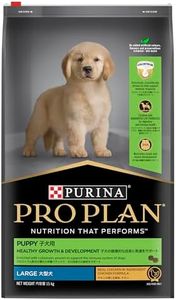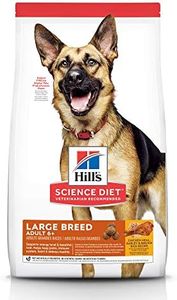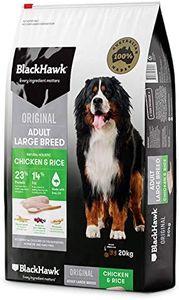We Use CookiesWe use cookies to enhance the security, performance,
functionality and for analytical and promotional activities. By continuing to browse this site you
are agreeing to our privacy policy
10 Best Large Breed Dog Foods
From leading brands and best sellers available on the web.Buying Guide for the Best Large Breed Dog Foods
Choosing the right dog food for a large breed is important for your pet’s overall health, growth, and energy levels. Large breed dogs have different nutritional needs compared to smaller breeds, especially when it comes to bone, joint, and muscle development. A thoughtful approach involves looking at several key nutritional aspects tailored for large breeds. Understanding these factors will help you pick a formula that matches your dog’s age, activity, and health status, ensuring a happy and healthy companion.Protein ContentProtein is crucial for muscle development and maintaining a healthy immune system in large-breed dogs. The protein percentage in dog food can vary, generally ranging from moderate to high. Lower protein (around 18-22%) is often enough for less active or older dogs, while more active or younger dogs may benefit from slightly higher protein (22-28%). Think about your dog's age and activity level—puppies and active adults need more protein, while seniors or less active pets may need less to avoid weight gain.
Fat LevelFat in dog food provides concentrated energy and supports skin and coat health. Large breed foods tend to have controlled fat levels (usually 8-14%) to help prevent excessive weight gain, which can stress joints. Choose a lower fat percentage if your dog is prone to gaining weight or is less active. If your dog is very energetic or participates in a lot of activity, a moderate fat level is suitable. Monitoring weight and adjusting as needed is key.
Calcium and Phosphorus RatioCalcium and phosphorus are vital for bone growth and strength, particularly for large-breed puppies, as too much or too little can affect skeletal development. Large breed formulas tend to have balanced ratios (usually about 1.2:1 calcium to phosphorus) to support controlled and safe growth. If you have a puppy, look for a food that specifically states it supports large breed growth and check that the ratio is balanced. Adults benefit from continued attention, but the risk is highest during rapid growth phases.
Kibble SizeThe size and shape of kibble matter, especially for large dogs, as larger, denser pieces encourage chewing and can help prevent gulping and choking. Kibble designed for large breeds is typically bigger and more solid, making it easier for big dogs to eat safely. Choose larger kibble if your dog tends to swallow food quickly, or if you notice he struggles with smaller pieces.
Joint Support IngredientsSince large dogs are prone to joint issues like arthritis or hip dysplasia, many large breed foods include ingredients such as glucosamine and chondroitin to support joint health. If your dog is older, overweight, or belongs to a breed prone to joint problems, pay special attention to these additives—they can help maintain mobility and comfort. Younger, active dogs can also benefit from these nutrients as a preventive measure.
Calorie DensityCalorie density refers to how many calories are packed into each cup of dog food. Large breed foods usually have a moderate calorie content to help manage weight, as large dogs are at risk of obesity and related health problems. Check the calorie information and match it to your dog's lifestyle—more calories for energetic dogs and fewer for more sedentary pets.
Digestibility and Fiber ContentGood digestibility means your dog gets more nutrition from less food and produces less waste. Fiber helps keep digestion regular and can prevent gastrointestinal issues. Large breed formulas typically have balanced fiber content (around 3-5%). If your dog has a sensitive stomach or frequent digestive issues, prioritize foods tested for digestibility and with the right balance of fiber.
